Dan and I are currently leaving Gunsite Academy after two days (and one night) shooting and training with Crimson Trace’s new RAD — Rapid Aiming Dot — line of reflex style red dot sights, which will be hitting shelves soon. With basic and Pro models in three sizes, the RAD line has you covered from micro-compact pistols up to rifles and shotguns.
This is not a review. That will follow after we tinker with the RADs a bit more, but I’ll cover the initial RAD dot models that Crimson Trace will be releasing soon and a little bit of the dot-specific training we did at Gunsite.
All reflex optics with 7075 aluminum frames, each size of the RADs comes in both red and green LED flavors and in a simple, less expensive variant and a more feature-rich, higher-priced variant.
The RAD Micro is a teeny little bugger. It’s ideal for CCW pistols like the SIG P365, Springfield Hellcat, and any other micro-compact that’s cut for an optic.
The Micro uses the Shield footprint that we happened to post about yesterday.
The standard RAD Micro automatically adjusts dot brightness and has a rear sight notch machined into it. It’s so slim and small that it will co-witness with many factory sights.
Handwritten price notes on the product detail card above and all of the cards to follow are expected retail prices — so a bit under MSRP.
You’ll see a pattern here shortly, but bumping up from the standard RAD Micro to the RAD Micro Pro means the addition of the CT Motion Sensor. If the sight is completely still for two minutes it puts itself to sleep. The slightest movement wakes it up instantly. This conserves battery life without the user having to manually turn the optic off or put a cover on it.
The RAD is still an extremely compact reflex sight, and this one is geared toward compact, duty, and full-sized pistols. Picatinny mounts are available for use on rifles and shotguns, too.
If I remember correctly, the CT RAD is on the Docter footprint.
While the RAD is manual brightness adjust and manual on/off, the RAD Pro provides the option of automatic brightness adjustment and has the motion sensor sleep mode.
Finally, the RAD Max and RAD Max Pro. These larger dots are geared toward use on rifles and shotguns and come with both a low-profile and a co-witness Picatinny mount.
Arriving in the classroom at Gunsite Academy we were each “issued” a Radian Weapons Model 1 AR-15 and a GLOCK 19 MOS. The AR was sporting a RAD Max and a CMR-301 light and laser unit, while the GLOCK was equipped with a RAD and a CMR-207 light and laser.
We then spent a full day on the range receiving Gunsite instruction on running optics-equipped pistols. We worked a lot on presentation techniques geared specifically toward acquiring a pistol dot quickly and efficiently and how to correctly sight with it.
We ran nighttime drills employing the light, laser, and red dot both on the square range and out on a steel target course in the Arizona high desert.
Likewise with the rifles from close-in back to 25 yards in the dark.
The next day we ran both rifles and pistols on a range full of different shooting positions to engage Caldwell steel targets of various shapes and sizes out to 250 or so yards. This was a lot of fun, and this is where a red dot on a pistol really shines for me over iron sights.
We ran a house clearing drill with the ARs. I did not murder the no-shoot target holding a camera.
This guy holding a detonator didn’t make it, though. That was a really fast double-tap so I felt obligated to show it off.
A good dot certainly makes shooting confidently and accurately a lot easier, and by all appearances and behind-the-gun time so far the RAD line is full of very good red dots at very competitive prices.
Dan and I were both impressed by how crisp and clean and clear the dot itself is. I don’t typically see a perfectly round, clean dot with the vision in my right eye but I did through all of the RADs. I had no problem getting a very precise sight picture and dot brightness was appropriately adjustable for use in pitch black night to full sun Arizona day.
The glass has very little tint to it and the frame doesn’t block much field of view.
We’ll follow up with in-depth reviews on the Crimson Trace RAD optics line soon and perhaps an article on the Gunsite Academy facilities and instruction as well.

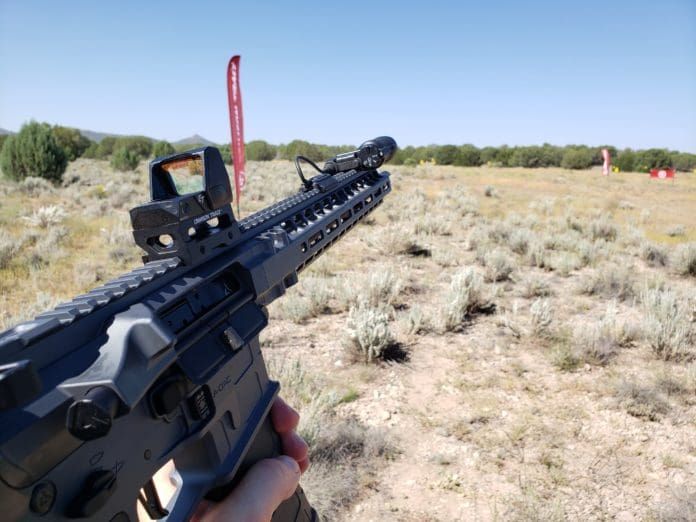
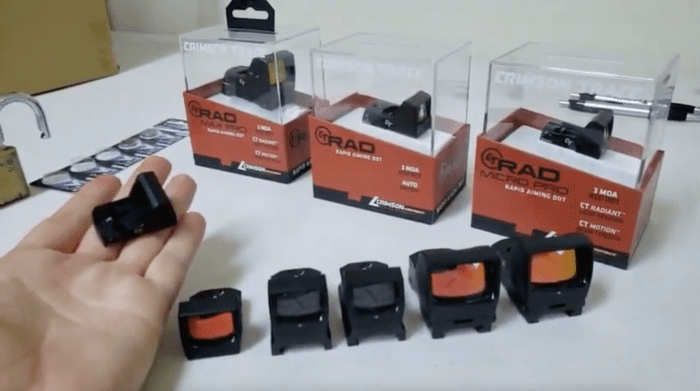


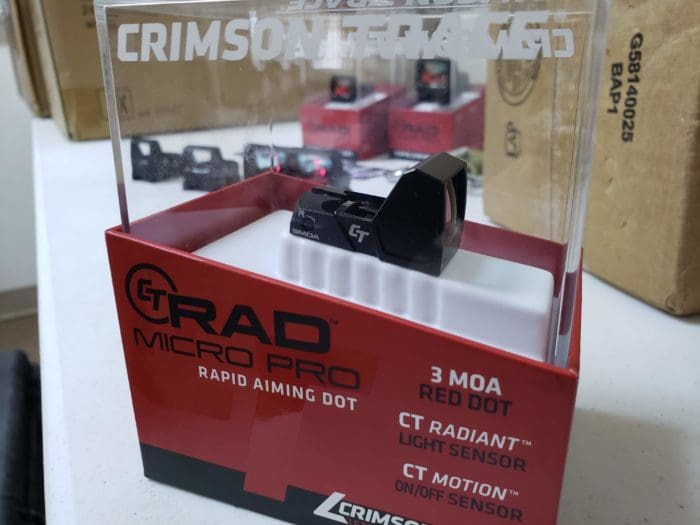



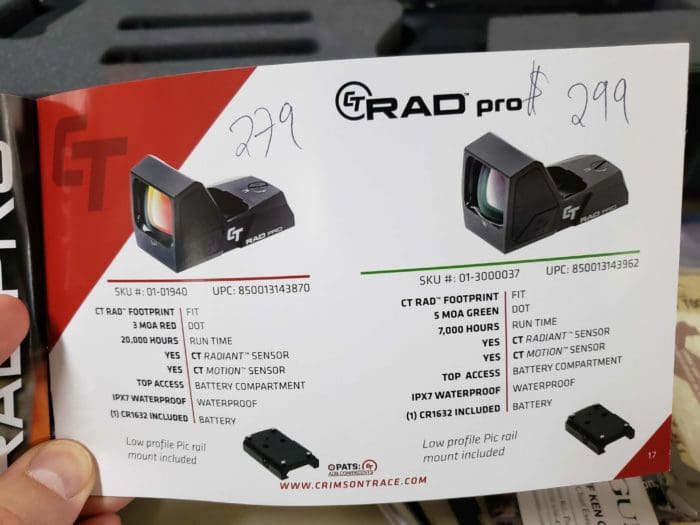
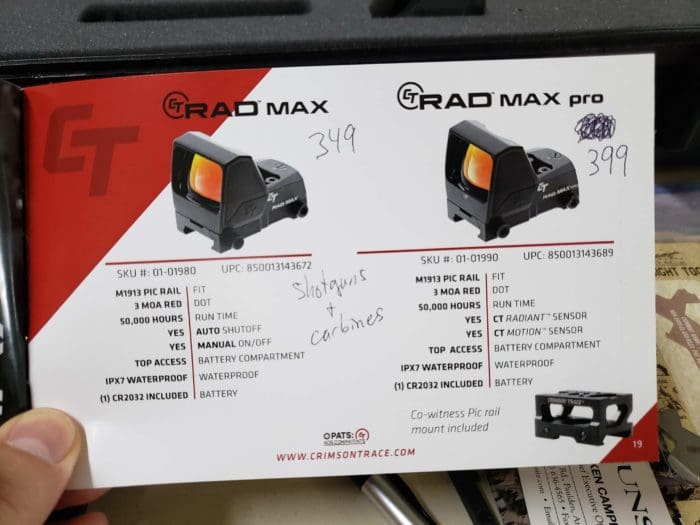
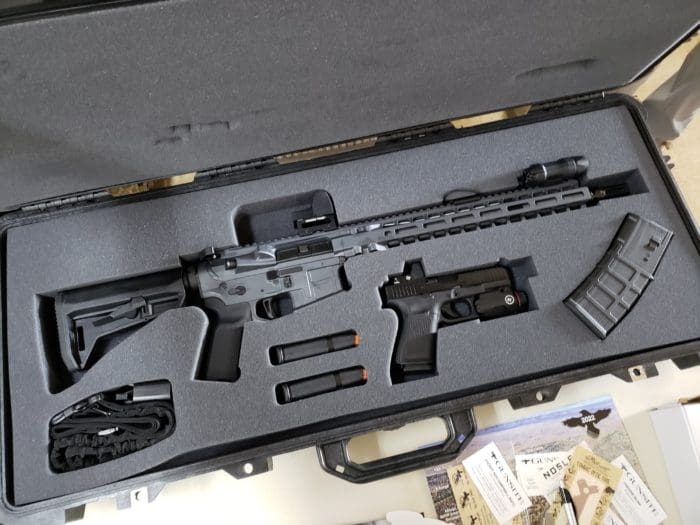

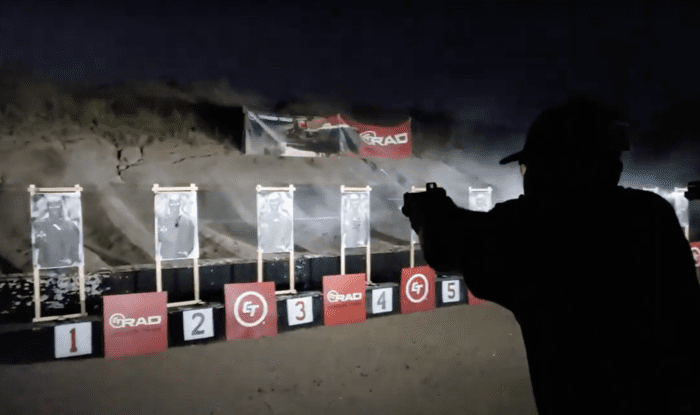
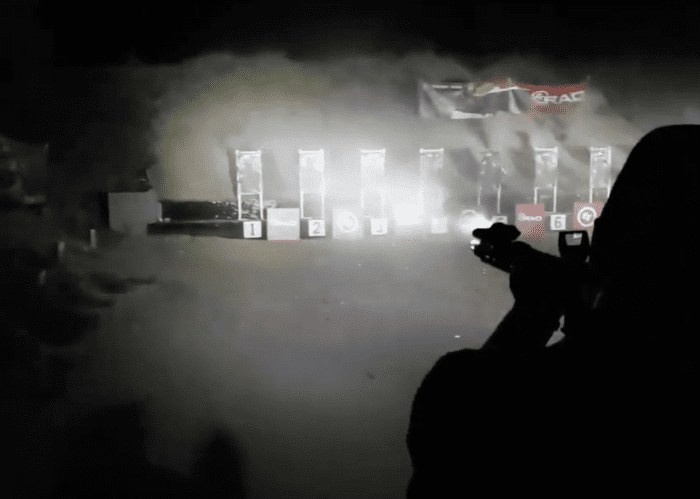



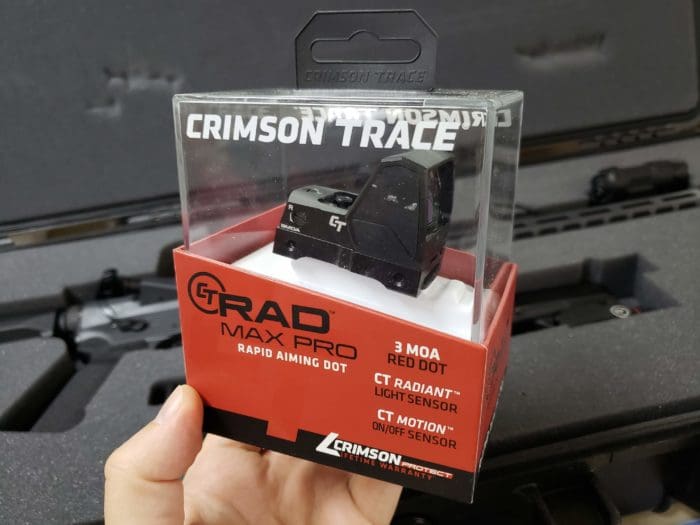
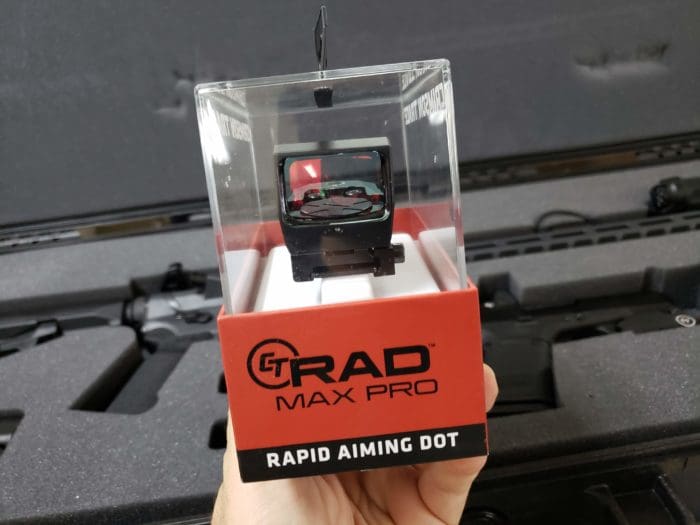
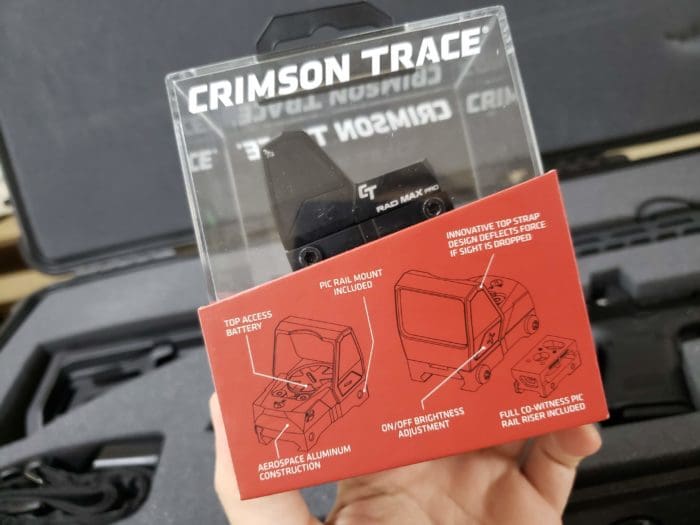



I’m looking forward to the actual review. I have recently put red dots on two of my pistols and have seen a great improvement in my shooting. These things have been a blessing to old eyes!
Even more importantly, having a good information will really help with future choices and this is something I have come to expect from TTAG.
“It’s so slim and small that it will co-witness with many factory sights.”
I’m glad that’s getting a bit of attention.
Since a jostle turns it on, how many months could one expect to get life out of the battery, when carried daily?
TBH, I’m not as much a fan of co-witness sighting as I thought I would be when I first set up a red dot on one of my guns. I found that I work best with either full iron sights, or just a red dot. Putting both together places too much in front of my eyes for me to effectively react and focus on targets. My 2 cents.
That said, two of my LEO buddies love their Holosun 509s on their EDCs. If these CTs shown above can perform well at a lower price, I might be interested.
I have the co-witness setup on my 365. It’s not intended to be used in conjunction with the dot – it’s there as a backup in case the dot fails. If the dot is working, I ignore the irons.
Yeah, in this case “co-witness” doesn’t mean that the red dot is sitting right on top of your front sight when your sights are aligned. They’re operating separately in that when the red dot is on the target and you’re focusing on the target, the irons are way down below your field of sight — you do not see them and they are not aligned. If you align the irons to use them, they’re in the very bottom of the optic’s window and the dot is often out of the way just below the front sight because of the angle. And, realistically, if you’re using the irons it’s because the dot failed so it doesn’t really matter where the dot shows up when you have the irons aligned.
…I’d call it like lower 1/4-bottom co-witness for factory sights and the RAD Micro. I’ll take photos of that on a couple different pistols as part of the full review…
I’m glad these are available in GREEN as well as red.
My eyes have astigmatism that makes red dots blurry, but for some reason, green dots appear sharp. Unfortunately, there are very few mid-priced green dots.
Eotech, Trijicon, and Holosun make green dot sights, but they’re expensive, and Holosun charges a lot more for their green dots than their red dots (Holosun’s green-dot version of their HS512T costs $545 on Amazon, as much as an Eotech, and it’s made in China).
Then there are the cheap Chinese airsoft-quality red-green dots with a battery life measured in minutes rather than hours that will break under the recoil from a .22 LR (slight exaggeration, but only slight).
I’m glad Crimson Trace and another manufacturer are finally coming out with mid-priced green dots. Let’s hope Crimson Trace doesn’t do like Holosun and jack up the prices on their green-dot models to Eotech levels!
Good to know. I’ll be looking for a green one. My rifle red dot isn’t very sharp.
Is Holosun the only one offering a circle dot? It seems like that would useful. I picked up an M&P C.O.R.E. so I’m in the market.
“the CT RAD is on the Docter footprint”
What’s the Docter footprint?
Trijicon Doctor
Thank you
I think I’d try and shoot detonator guy between the eyes, and not in the nose. When he sneezes the bullets out he might detonate the blomb.
For the upper end ones, those are getting near RMR prices. If I’m going to be paying RMR prices, i’m probably going to just be getting an RMR. I get that those are MSRP and they might come around for less in stores.
I dunno, the market is crowded already. You’re gonna have to sell me on features or price, because a fancy box with display case isn’t gonna do it for me. I know it’s meant to make me perceive more value, but I’d rather save the $10 on packaging that adds $20 to the price tag.
Nah…the RAD Pro, which is the one that’s comparable in size to the RMR, is $299. RMR starts at like $459. I do think one advantage the RAD Pro has is that its ambient light sensor is on the front instead of inside the housing, which makes it a lot more effective at adjusting dot brightness based on your target’s brightness rather than your brightness. For example, with another auto-brightness-adjusting optic I’ve shot from a shady area in the forest out to a target in full sun, and the dot was far too dim. Same will happen if you’re in the dark and you’re illuminating a target with a flashlight. With the RAD Pros, they’re going to “see” the light from the target area much better and run an appropriately bright dot for your sunny target even if you’re in a darker spot.
Comments are closed.